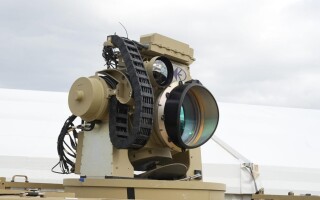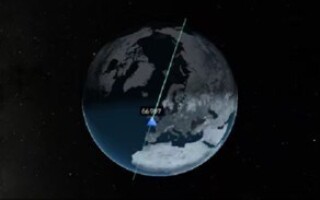Quantum inertial navigation at NRL
NewsApril 09, 2024

WASHINGTON. Researchers at the U.S. Naval Research Laboratory (NRL) developed a patent-pending Continuous 3D-Cooled Atom Beam Interferometer that is derived from a patented cold and continuous beam of atoms to explore atom-interferometry-based inertial measurement systems as a way to reduce drift in Naval navigation systems.
Inertial navigation is a self-contained navigation technique in which measurements provided by accelerometers and gyroscopes are used to track the position and orientation of an object relative to a known starting point, orientation and velocity, according to a NRL release. Quantum inertial navigation, a new field of research and development (R&D), can increase inertial measurement accuracy by orders of magnitude.
“Our interferometer operates in a different regime than most other modern implementations of an atom interferometer,” says Jonathan Kwolek, Ph.D., a research physicist from the NRL Quantum Optics Section within the Optical Sciences Division. “By operating with cold, continuous atoms, we have opened the door to a number of advantages as well as novel measurement techniques. Ultimately, we would like to use this technology to improve inertial navigation systems, thus reducing our reliance on GPS.”
Enabled by the unique properties of the atom source, the Continuous 3D-Cooled Atom Beam Interferometer shows promising measurement characteristics such as high measurement contrast, low noise, and improved handling of variations in the sensor’s environment, according to the NRL release. This technology has the potential to provide the Navy the ability to operate in GPS-denied environments and overcome limitations to the accuracy of GPS.
Depending on the measurement platform, errors in the location estimation will accumulate and result in loss of accurate position information. Current commercially available inertial navigation systems, for example, can navigate with an error accumulation of roughly one nautical mile over 360 hours. NRL researchers intend to come up wwith new technologies to extend that time such that navigational drift does not limit mission duration, according to the NRL release.
“The field of inertial navigation aims to provide navigation information anywhere GPS is unavailable,” says NRL Associate Director of Research for Systems Dr. Gerald Borsuk. “The advent of atom interferometry allows for a novel approach in inertial sensing, which has the potential to address some of the deficiencies in current state-of-the-art technologies.”
There are certain battlespace environments in which GPS cannot function, such as underwater or in space, as well as an increasing threat to GPS availability in the form of jamming, spoofing, or anti-satellite warfare.
“In an ideal world, we hedge against loss of conventional navigation by making the best inertial navigators we can,” Kwolek says. “This is to ensure that a loss of GPS doesn’t allow our ships to become lost in the middle of enemy territory.”
Atom interferometers
Interferometers are devices that extract information from interference using coherent waves, according to the NRL release. This class of device is widely used for the precise measurements of displacements, refractive index changes and surface topologies. Inertial navigation is used in a wide range of applications including the navigation of aircraft, tactical and strategic missiles, spacecraft, submarines, and ships.
Atomic physics provides unique tools for measuring with extreme precision. Atom interferometry is a method within atomic physics in which quantum interference of atomic matter waves is used to measure extremely precise changes in environmental conditions, such as fields or inertial forces.
“Performing atomic inertial measurements as opposed to a classical measurement gives different error dependencies,” Kwolek says. “We predict that if done carefully, atomic interferometers will exhibit better long-term noise behavior and accuracy than current leading technologies. Translated to the world of inertial navigation, this means keeping your location fix for longer providing more operational flexibility.”
Atom interferometers can also be used to discipline another sensor, much like how clocks are disciplined to GPS. This combination of an interferometer with a cosensor can enable interferometers to realize a benefit in a real-world measurement scenario.
“This is by no means a complete solution,” Kwolek explains. “There are tradeoffs to operating an atomic interferometer, for example, the enhanced sensitivity correlates to worse dynamic range. We are exploring multiple avenues to solving this problem including cosensor implementation or alternative cold-atom techniques.”
This quantum optics research is sponsored by the NRL Base Program and the Office of Naval Research.
The National Defense Authorization Act for Fiscal Year 2024 states that quantum technology is approaching a tipping point that will determine how quickly it can make an impact. If the United States can stay on pace, many important outcomes for the Department of Defense (DOD) can be realized including robust position, navigation and timing for DOD freedom of operations with precision strike even with contests in spectrum, space, or cyber operations, according to the NRL release.
“In the modern era, NRL is one of several research organizations addressing naval inertial navigation challenges,” says Adam Black, Ph.D., NRL Quantum Optics Section Head. “The lab is taking advantage of advanced atomic and optical techniques to invent new architectures for inertial measurement that promise accurate navigation of dynamic Navy platforms.”
Featured Companies
U.S. Naval Research Laboratory
Washington, DC 20375





